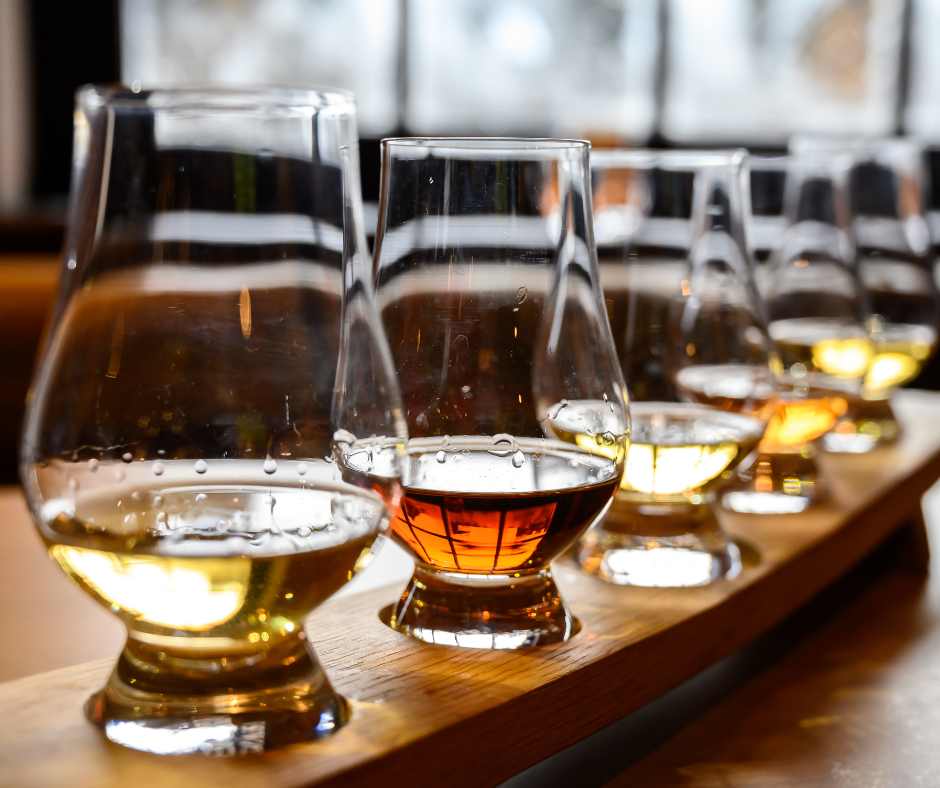
What's the Difference Between Bourbon and Scotch?
A Beginner's Guide to Understanding the Key Differences
Whiskey lovers, gather 'round because today, we're diving headfirst into the fascinating world of whiskey, specifically the battle between two heavyweight contenders: Bourbon and Scotch. In this beginner's guide, we'll uncover the key differences between these iconic spirits that have captured the hearts and palates of enthusiasts worldwide. So, grab your favorite glass, and let's embark on this flavorful journey!
Understanding the Basics of Whiskey
Before we delve into the epic Bourbon vs. Scotch showdown, let's start with the fundamentals of whiskey. You see, whiskey falls into the broader category of alcoholic beverages with specific standards and categories that vary from one country to another.
In a nutshell:
- Wine is produced from fermented fruit.
- Beer is made from fermented grains.
- Brandy is distilled wine.
- Whiskey is distilled beer.
Now that we've clarified the whiskey category let's focus on the stars of the show: Bourbon and Scotch.
The Origins - A Brief History of Whiskey
Whiskey has a rich history dating back to 1405 when it made its first appearance in written records. Interestingly, it originated in Ireland when a clansman drank whiskey until his unfortunate demise.
There are two main styles of distilling equipment used for making whiskey: column stills and pot stills. Column stills, also known as continuous stills, offer efficiency, and they played a pivotal role in Scotland's rise as a global whiskey powerhouse.
The U.S. whiskey industry faced two major shutdowns during Prohibition and World War II. These interruptions allowed Scotch to dominate the international whiskey market. However, in recent years, the U.S. whiskey industry is making a triumphant comeback, sparking interest in discerning the differences between Scotch and Bourbon.
Bourbon vs. Scotch - The Geographical Divide
The first crucial difference between Bourbon and Scotch lies in their geographical origins, and this distinction is protected by international treaties.
- Scotch must be made in Scotland, period.
- Bourbon, on the other hand, is a product of the United States, and it proudly wears its stars and stripes.
Ingredients Matter - Grains and More
The grains used in the production of Bourbon and Scotch play a vital role in shaping their flavor profiles.
- Single malt Scotch, the focus of our comparison, is made exclusively from 100% malted barley.
- Bourbon, meanwhile, is primarily composed of at least 51% corn, with the remaining portion typically being either rye or wheat. Additionally, Bourbon includes five to fifteen percent malted barley.
The malted barley used in Scotch is crushed using a roller mill, while Bourbon's corn-based mash is pulverized into a fine flour with a hammer mill. This distinction arises from the need for a greater surface area for the corn, rye, or wheat in Bourbon to convert starches into sugars during fermentation.
The Production Process - Cookers and Stills
The production process also sets Bourbon and Scotch apart, starting with the cooking stage.
- Scotch is typically cooked in a mash tun, which allows the separation of grain solids from the sugary liquid before fermentation.
- Bourbon, however, uses a cereal cooker, where grain solids remain in contact with the liquid throughout the process, only separating during distillation.
Speaking of distillation, both Bourbon and Scotch can be distilled in pot stills or column stills. However, single malt Scotch must be produced in pot stills, which contrast with Bourbon's preference for column stills. The column still offers efficiency and is favored for the production of Bourbon.
Aging and Maturation - Oak Matters
Maturation in oak barrels contributes significantly to the flavor and character of whiskey. Here's where Scotch and Bourbon have distinct rules:
- Single malt Scotch must be aged for a minimum of three years in Scotland.
- Bourbon doesn't have a specific age requirement but must be labeled as "straight bourbon" if aged for less than four years. Any Bourbon aged less than four years must include an age statement on the label.
Additionally:
- Scotch can have caramel coloring added for consistency.
- Bourbon must remain unadulterated, ensuring purity.
Conclusion
In conclusion, while Bourbon and Scotch both fall under the umbrella of whiskey, they are distinctly unique spirits with differences in origin, ingredients, production processes, and aging requirements. Understanding these nuances enhances your appreciation of these beloved whiskeys.
So, the next time you raise your glass, whether it's filled with a smoky Scotch or a robust Bourbon, you'll have a deeper appreciation for the craftsmanship and history that goes into each sip.
Remember, whiskey is about more than just the liquid in the bottle; it's about the stories, the traditions, and the sense of community it fosters. So, join us in celebrating the world of whiskey, and let's raise a toast to the spirit that brings us all together.
